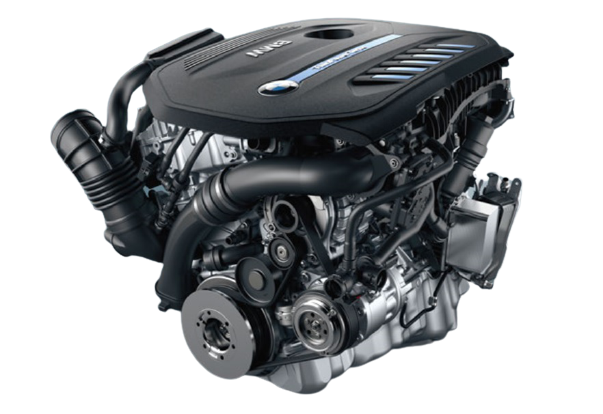The Advancement of the BMW Engine: A Recall at Iconic Versions
The Advancement of the BMW Engine: A Recall at Iconic Versions
Blog Article
Discovering the Evolution of Burning Engines in Modern Transport Equipments
As we navigate the landscape of modern transport, the development of combustion engines stands as a testimony to human resourcefulness and engineering expertise. The interaction of history, modern technology, and ecological issues in forming the trajectory of combustion engines creates a story that is both insightful and engaging.
Early Beginnings of Combustion Engines
Exactly how did the concept of burning engines very first arise in the early stages of transportation growth? The roots of combustion engines can be mapped back to the 17th century when the concepts of internal burning were very first discovered.
The breakthrough moment featured the creation of the initial successful gasoline-powered engine by Karl Benz in 1885 - bmw engine. This engine paved the method for the growth of the modern vehicle, revolutionizing transport systems worldwide. Subsequent innovations by Nikolaus Otto and Gottlieb Daimler further fine-tuned combustion engine innovation, leading to the automation of vehicles and the quick expansion of the transportation industry
These very early burning engines were identified by their simplicity and efficiency, laying the foundation for the complex and powerful engines made use of in modern-day transport systems. The advancement of burning engines has been critical in forming the method we travel and transfer goods, marking a significant milestone in the background of transport advancement.
Shift to Internal Burning Innovation
The shift to internal burning modern technology marked a critical change in the advancement of transportation systems. This shift started in the late 19th century, with innovators like Nikolaus Otto and Gottlieb Daimler establishing the first effective interior combustion engines. These engines changed transport by providing a more effective and effective alternative to vapor engines and electrical motors.
One of the crucial advantages of inner combustion engines was their ability to be reduced to fit into lorries, causing the development of bikes and cars. This shift from cumbersome, stationary engines to portable, mobile ones led the way for the contemporary transportation systems we see today.
The transition to interior combustion modern technology likewise spurred advancements in fuel modern technology, resulting in the growth of gas and diesel as key fuel resources for vehicles. This change not just made transportation a lot more easily accessible to the masses but likewise laid the structure for the oil and gas industry to end up being integral to worldwide economic situations.
Impact of Combustion Engines on Transportation
The adoption of burning engines in transportation systems catalyzed an extensive change in the effectiveness and rate of global wheelchair. Burning engines transformed transport by providing a reputable and versatile resource of power for various lorries, consisting of vehicles, vehicles, ships, and airplanes. This innovation considerably boosted the capacity for people and goods to move over cross countries in shorter time frameworks, leading to raised connection in between regions and countries.
Additionally, the prevalent usage of burning engines has actually had a significant influence on financial advancement. The capability to deliver products effectively has spurred trade and business, permitting services to broaden their markets and reach consumers worldwide. This has actually promoted financial development and globalization, as products can now be transported much faster and in bigger quantities than ever previously.
However, the ecological influence of combustion engines can not be neglected. The combustion of fossil gas has actually resulted in air pollution and greenhouse gas exhausts, adding to climate modification and positioning health threats to populations. bmw engine. Because of this, there is an expanding focus on developing different propulsion innovations to reduce these adverse impacts and create an extra sustainable future for transport
Advancements in Combustion Engine Layout
One remarkable technology is the development of turbocharged engines, which utilize exhaust gases to drive a wind turbine that compresses incoming air, enabling for more gas to be burned, resulting in increased power output without a significant rise in engine dimension. Variable shutoff timing systems have also revolutionized engine layout by maximizing air flow at different engine speeds, enhancing both power and efficiency. These innovations jointly add to the continuous improvement of burning engines in contemporary transportation systems.
Future Fads in Burning Engine Advancement
With innovation advancements driving constant technology, the future of combustion engine growth is positioned to transform transport systems worldwide. One of the crucial trends in combustion engine growth is the push towards higher performance and decreased exhausts.
Another famous trend is the adoption of crossbreed modern technologies in combustion engines. Hybrid engines integrate typical combustion innovation with electrical power, supplying enhanced gas performance and reduced emissions. As the vehicle sector shifts towards electrification, crossbreed burning engines are viewed as a transitional solution that connects the space in between standard vehicles and completely electrical ones.
Moreover, the combination of clever modern go to website technologies, such as synthetic knowledge and information analytics, is anticipated to play a significant role in the future of combustion engine advancement. These modern technologies can maximize engine efficiency in real-time, bring about more efficient combustion processes and enhanced general automobile performance. Accepting these future patterns will certainly not just drive advancement in burning engine growth however likewise try this add to a much more ecologically pleasant and sustainable transportation community.

Verdict
In final thought, the development of burning engines in contemporary transport systems has actually been marked by substantial developments in technology and design. From the very early beginnings of combustion engines to the change to interior burning modern technology, these engines have actually had a profound influence on transportation.
The roots of burning engines can be traced back to the 17th century when the concepts of interior combustion were initial checked out. These engines transformed transport by using a more reliable and powerful alternative to heavy steam engines and electric motors.

Report this page